The Montblanc-alikes
A deep-dive into the Majohn P-Series Fountain Pens


When it comes to Chinese pen brands, Majohn (née Moonman1) is one of the biggest out there. They're known for producing many pens that are heavily... er, "inspired" by other pens. They've leaned so hard into this on some models that certain parts are fully interchangeable with their original counterparts. This is one of the things some people—quite fairly—have a problem with. At what point does a homage become a clone or even an outright counterfeit? For me, their pens tend to land somewhere between a homage and a clone. They can look a lot like the real thing, but they're not pretending to actually be the genuine article or trying to fool people into thinking they are—at least not the people buying them. I'm sure a decent amount of their appeal comes from looking like you're using a more expensive pen than you actually are. Whether you think Montblanc's are worth their price or not, they have a huge amount of brand recognition. Ask a non-pen person what a Good Pen™ is, they'll likely say a Montblanc. Since they're viewed as luxury items, using one makes you appear more affluent—in some peoples eyes, at least.
On the plus side, their pens being so close to the originals can be useful to see if you like the size & feel of the real thing without spending hundreds or even thousands to find out. Sure, that could be done at a brick & mortar store, but not everyone has access to one and they may not stock the pen you're interested in, especially on the higher end of the scale. They also provide an affordable way to access pens that are either long out of production, exorbitantly expensive, or both. Granted, whether this is a positive or a negative point is highly subjective.
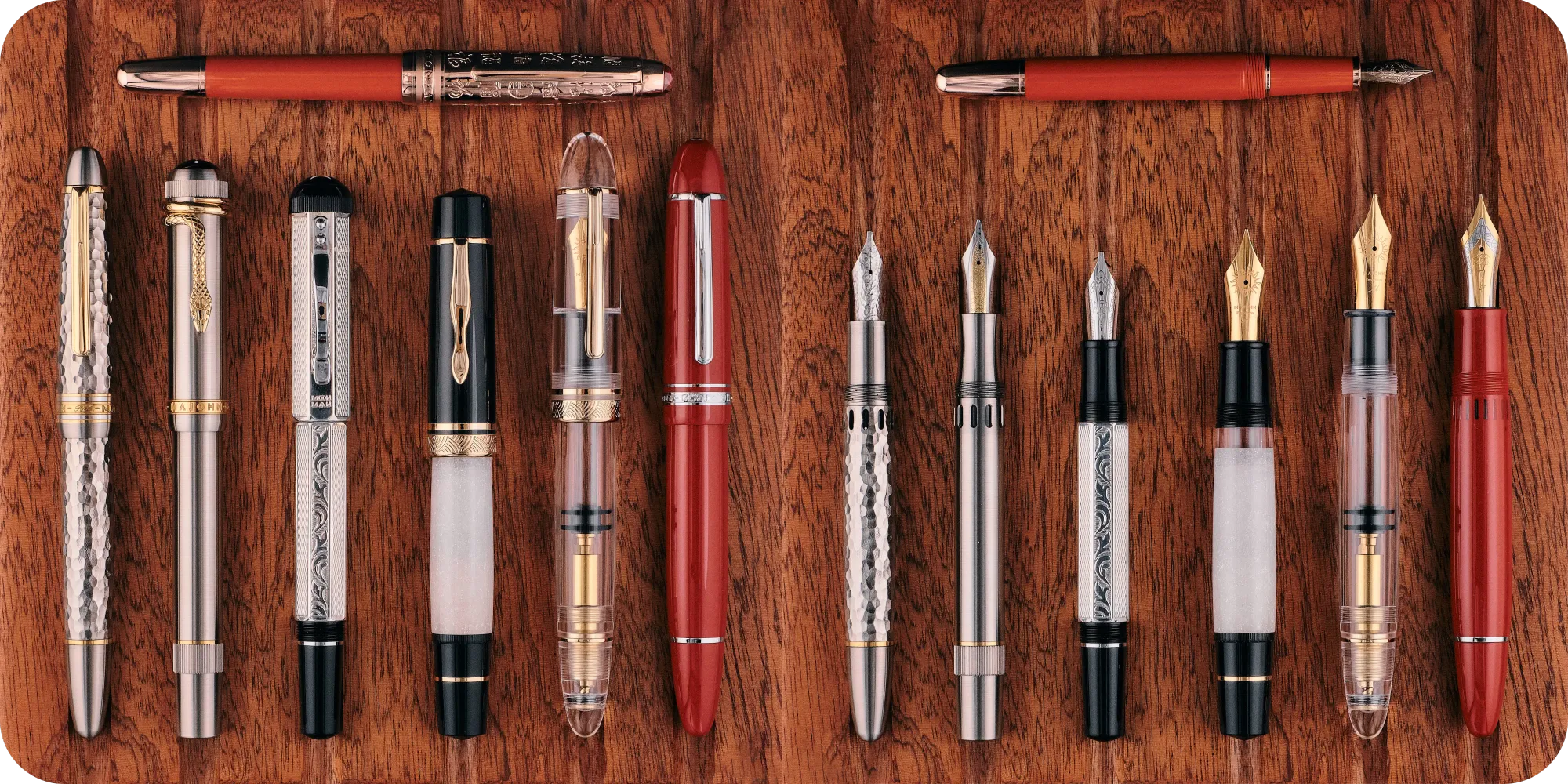
Something to keep in mind is that this kind of copying isn't anything new in the fountain pen world and isn't unique to Chinese makers. From practically its inception, companies have been lifting cues from—if not outright copying—each others designs. If a pen became popular, that design would start showing up in other companies catalogues both locally and abroad. This doesn't make it okay, but I've seen enough vitriol directed towards Chinese brands as though this is all they do or is a uniquely Chinese thing that I feel it needs pointed out.
Majohn do produce their own original pens in various shapes & sizes that have proved popular over the years. But it's their catalogue of—let's say non-original pens—that tend to get the most attention. We're going to add to that attention today by looking at the six seven fountain pens in Majohn's P-Series, all of which are based on various Montblanc pens. Massive shout-out to fountainpen.de which was invaluable for tracking down the majority of Montblanc's referenced in each of these pens. Any links to stores are purely for illustrative purposes and are neither affiliate links nor endorsements.
P135
- Nib Size: #5
- Length: 137.6mm capped / 123mm uncapped / 155.5mm posted
- Width: 11.9mm body / 8.3-10.3mm section
- Weight: ~36.2g inked / 35.6g empty
- Price: ~£20-25 2
- Originality Rank: Homage

The P135 was the first in this series and has been around since at least 2020 in a few different designs. As the name alludes to, this is based on the small cartridge/converter Montblanc 145, with specific "inspiration" from the Unicef Solitaire Doue and Le Petit Prince models depending on which colourway you go for. I decided to go with the coral red & rose gold "Fu" edition as the rose gold stood out to me among it's silver-capped siblings, although I do prefer the motif on the cap of the dark red version a bit more. As mentioned earlier, this is a cartridge/converter pen just like the real 145, and the only one in this series that isn't a piston filler. Thanks to this, I have absolutely no idea what the "P" stands for if it isn't "Piston", that's if it ever even stood for anything in the first place...
This is the smallest of the series, although it's surprisingly not the lightest despite the lack of piston mechanism. I tend to prefer larger pens, but the P135 feels very nice in the hand—provided you don't post the cap. At 15.6g the cap adds significant weight to the back of the pen, completely throwing off the balance. Thankfully, the pen is still long enough to be be used un-posted, which is the way I prefer to use most pens anyway. The rose gold plating is nicely done, with the nib matching the other trim perfectly—something that isn't always the case with rose gold trims. I'd say the tone leans closer to gold than rose, but it has a pleasant warmth to it.
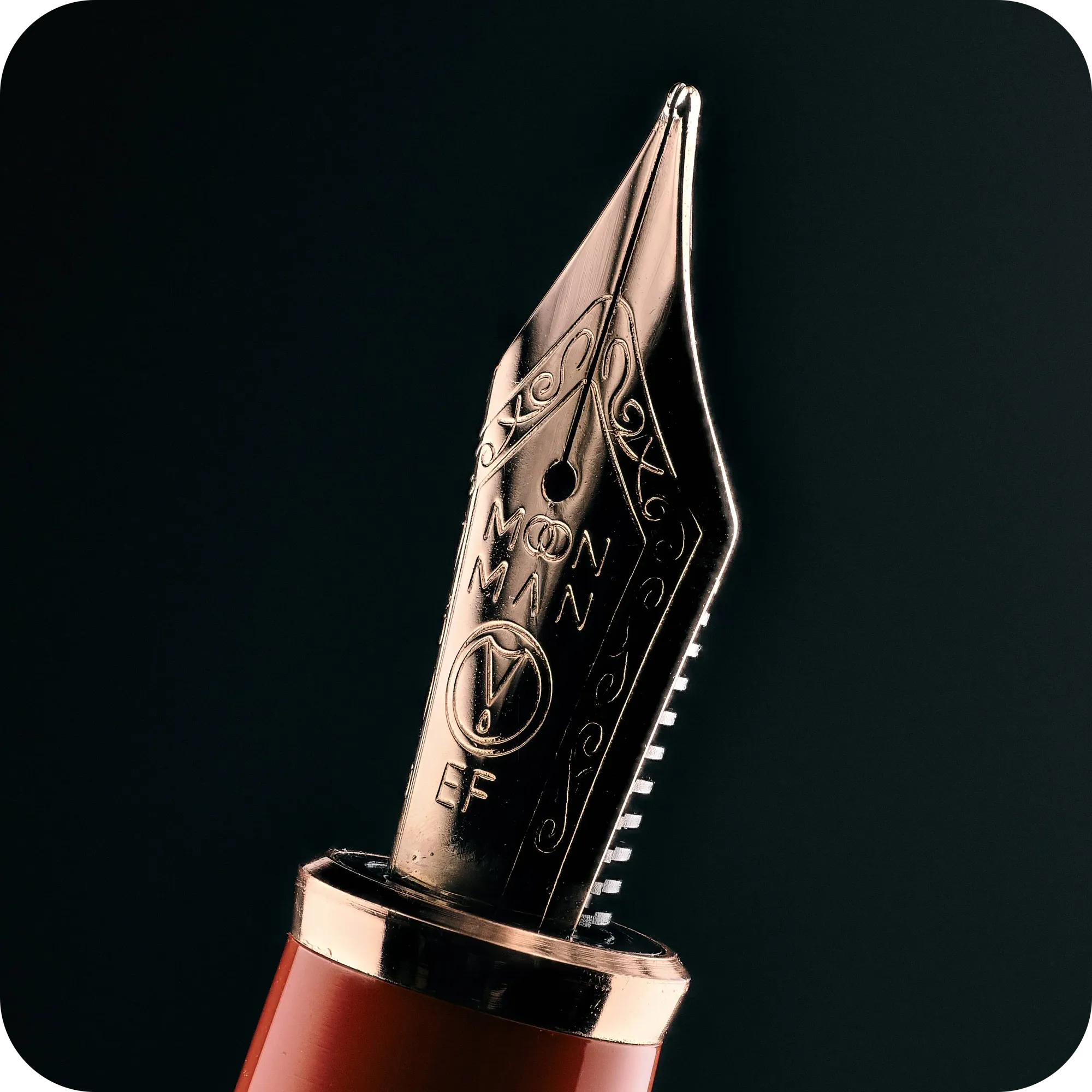

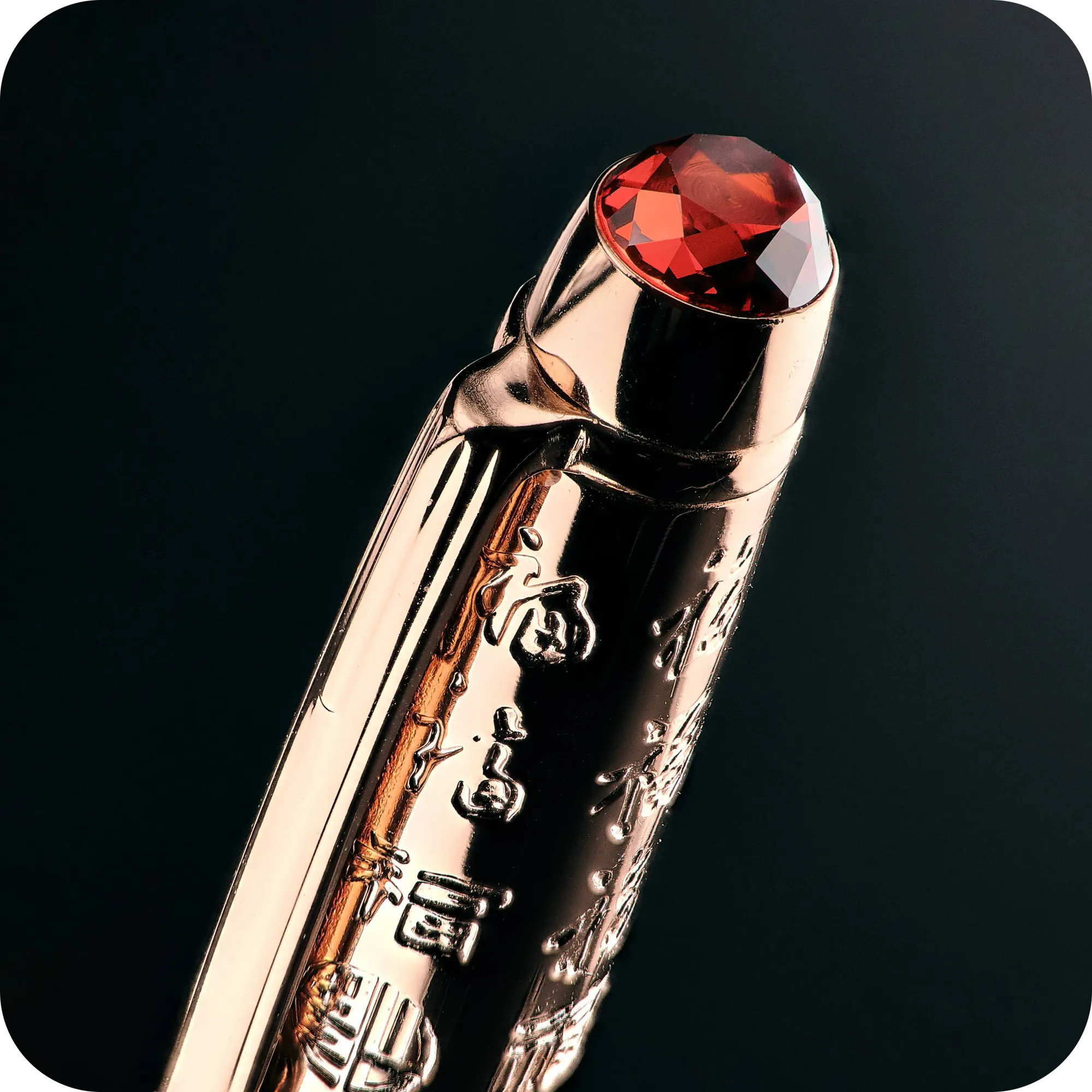

Details of the P135, including the misaligned finial
Since this is an older pen, both the nib and the cap band still read "MOONMAN", with clean imprints on both. I've always preferred the Moonman branding, so I'm happy to still see it whenever it pops up. It's interesting to see that the cap band is imprinted rather than engraved as we'll see with some future pens in this series. The imprint is clean, clear, and smooth, which I unfortunately can't fully say about the Chinese text on the rest of the cap. Yes, it's clean and clear, but the edges are very crisp and slightly catch on your skin when you run your fingers over it. Unfortunately, I can't read any of the text on the cap, and my translation apps can't get a clear reading on it. Continuing with what I don't like, the rose gold finial on the body isn't flush with the acrylic. A little more attention to the finish in these areas would make a big difference. I'm not a fan of the "ruby" on the cap finial, either. I don't know if this is a synthetic ruby or if it's coloured glass, but it does refract light nicely, so I don't think it's just plastic? The fact I can't really tell means it just looks rather cheap and tacky, and detracts from the overall look. Finally, the nib & feed don't seem to cope very well with shimmer inks. Actually, they don't seem to cope with any inks at all. I've had awful skipping and hard starts that I haven't been able to rectify no matter how I tune them. The tines are even with an adequate gap, there doesn't appear to be any baby's bottom or canyoning, and I even increased the feed channel a little to try and get better flow, all to no avail. I ended up adding some FPR Railroad X which helped a little, but it only works for as long as the feed is primed before drying out again, and has the side effect of feathering when the feed is at its juiciest, so it's not a real fix. It's a shame, because the pen feels nice in the hand and—other than the ruby—it looks great. I've since tried it with a rose gold Hongdian nib with a different ink but have ran into exactly the same issue, so I have to assume the feed is the problem. With no other immediately obvious solutions, I decided to hack away at the feed even more with a 0.3 Eiger Tool diamond file and an X-acto blade. This seems to have helped a little, but I'll need to test it more to be sure.
P136 (Ti)
- Nib Size: #6
- Length: 146.5mm capped / 126.1mm uncapped / 166mm posted
- Width: 13.4mm body / 11.2-10.8mm section
- Weight: ~43.7g inked / 42.6g empty
- Price: ~£22 (standard) / ~£75 (Ti) / ~£105 (hammered Ti)
- Originality Rank: Clone (Standard) / Homage (Titanium)
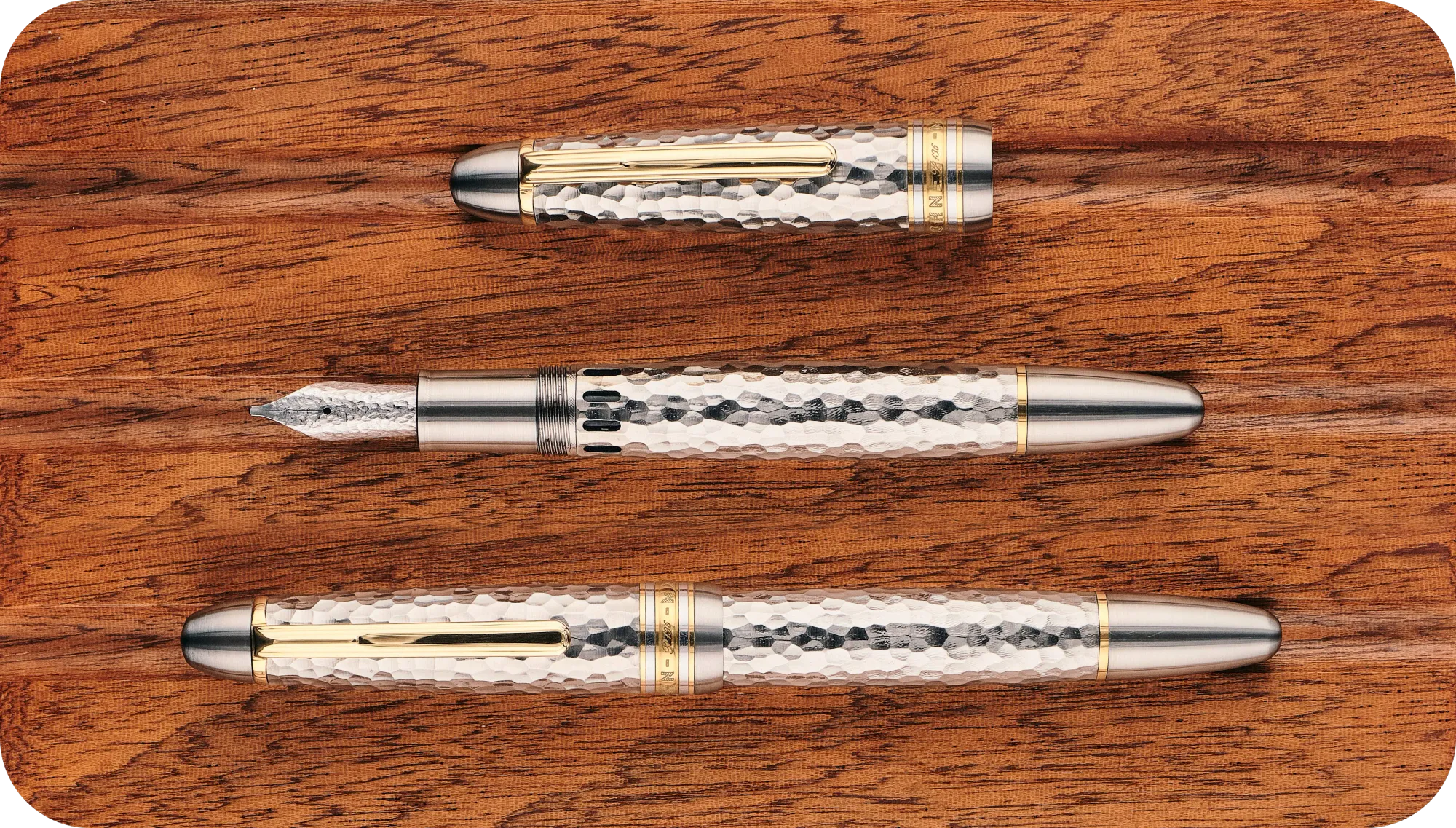
The P136 is (along with the P141) the most instantly recognisable of the set, even if you're only somewhat aware of Montblanc's standard Meisterstück pens. Once again, just as the name alludes to this one is based on the Montblanc 146. I had never been particularly interested in any of the 5 colours it was previously available in, that was until they released titanium versions last year in a number of finishes, including this one with a hammered body & cap. I'm a big sucker for hammered pens so I had to grab it, and I decided to replace the standard nib with a hammered stub nib from Bobby of ChinesePen on Etsy to complete the look. Just be careful with the feed if you decide to switch nibs. The fins on Majohn's #6 feeds are incredibly thin and fragile and will fold like a leaf if you so much as frown in its general direction.
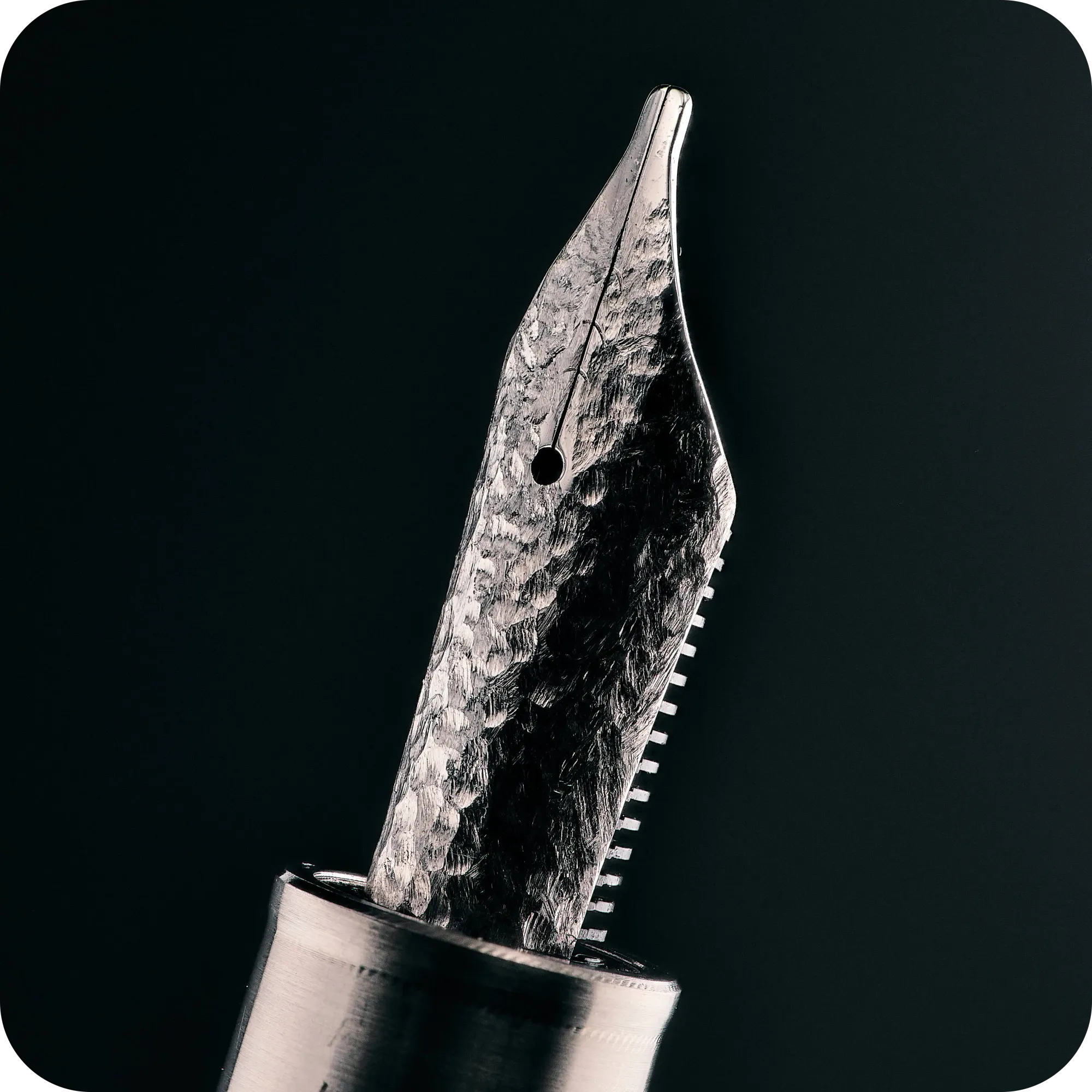
I adore this pen and have it permanently inked with Sailor Yurameku Seki—a beautiful chromashading ink that subtly changes colour as it dries, leaving you with grey, purple, & green tones. The titanium P136 and P137 models do have a disadvantage to them, though. First, the rim of the cap and the threads on the body are very, very crisp. I don't think they could cut you, but it can sometimes feel like it, especially if your fingers rest on the body threads. Secondly, the ink windows on these versions are recessed, so any ink that ends up in the cap can then become trapped in those little indents ready to transfer onto your fingers. At some point, the ink window on my P136 slightly cracked, possibly from over-tightening the piston assembly after cleaning which compounded the ink build-up issue, but it's been much cleaner since I replaced it. Shout out to 365Days Stationery on AliExpress for helping me get the replacement part. I would advise against messing around with removing the piston mechanism on any of these pens, but that's especially true for these titanium models. The ink windows on these is a separate plastic tube that is held in place by the piston mechanism. If you tighten the mechanism down too tightly (as I think I may have done) you'll crack it, so please be very careful if you must do this for some reason.
P137 (Ti)
- Nib Size: #6
- Length: 143.5mm capped / 128.7mm uncapped / 171.2mm posted
- Width: 12.5mm body / 11.6-10.3mm section
- Weight: ~44.2g inked / 43.2g empty
- Price: ~£85
- Originality Rank: Homage

Despite the lower model number, the P137 is a recent addition to the family coming in between the P140 & P141. It bears more than a passing resemblance to their earlier F9 models which were based on the Rouge et Noir & came with a few different creature-themed clips.3 The P137, however, is an altogether chunkier pen based on the Agatha Christie Writers Edition—itself based on certain versions of the even larger Safety No. 12 from the 1920's, which to this date still sports the largest nib Montblanc ever produced. Instead of being made from "precious resin", our P137 here is fully titanium. The gold trim is set off nicely against the raw titanium, especially on the snake clip that coils around the cap.
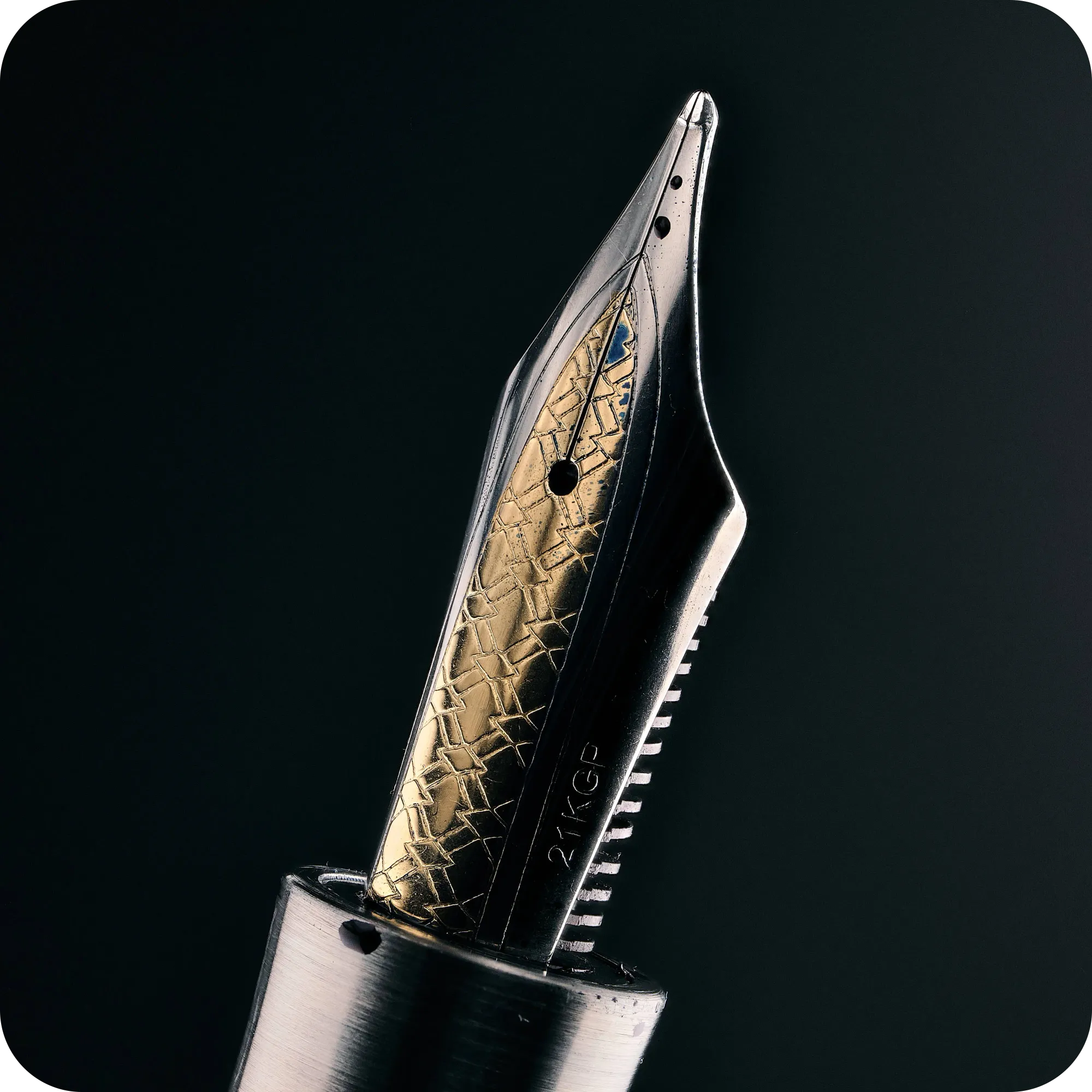
I ordered this one with a fine nib, which is my default choice for most pens. The one they sent was decent enough; it was a plain steel nib that was smooth & did the job. However, they also included a bi-colour extra fine nib which complimented the trim far, far better. Don't get me wrong, I do enjoy thinner nib points. The Platinum UEF is one of my all-time-favourite nibs, after all. But I find that fine points are my sweet spot for small-enough writing while still being able to show off ink properties well, so I was a little disappointed to be swapping the EF back in. But after filling it with Taccia Ukiyo-e Sabimidori—one of my absolute favourite inks and one that I think matched the snake theme well—I had no reason to be worried. It was juicy without being a gusher and laid a clean, sharp line. Despite this, I did eventually swap it out for a bi-colour Kaigelu "King of Yue" long knife nib which has a snake-like pattern on it. This has upped my love for this pen by a fair amount, and I was already enjoying it greatly. The architect-like grind adds character to my writing making it much more likely for me to grab this pen now compared to when it had a standard EF nib.
Edit: After writing this Majohn released another version with a different design for the snake clip that I significantly prefer to the Montblanc-style one. It looks like it's more of a roll-stop than a clip, but it's a more attractive snake & moves the needle on this model fully to homage. They've also released an anodised blue version with the original clip for ~£135.
P138
- Nib Size: #6
- Length: 139.5mm capped / 120.7mm uncapped / 152.1mm posted
- Width: 12.6mm body / 11.3-10.4mm section
- Weight: ~47.2g inked / 46.4g empty
- Price: ~£35
- Originality Rank: Clone

Majohn got a bit retro with this one, looking more like a pen from the 1920's instead of the 2020's. This time it's based on the Marcel Proust Writer's Edition, available in silver or all black & with 2 different cap styles. One of them sticks to the design of the Proust model, with the other drawing from the Lorenzo de Medici Patron of the Arts edition by extending the octagonal silver design on the body all the way up the cap, with a riveted and unbelievably stiff clip that Majohn themselves recommend not to try and force open in case the rivets rip out. This is the version I opted for as I think it has a classier look than the black cap version, but if I'd realised how nigh unusable the clip was I may have opted for the other model. That said, it looks fantastic. The imprints—or castings? I'm not sure how they make these—are clean and smooth on the body, although there are a couple rough parts on certain facets of the cap that catch your skin. Not as bad as the P135, but still noticeable. Something to note is that there is no ink window on this pen making it impossible to tell how much ink you have left, which I know can be a deal-breaker for many people.
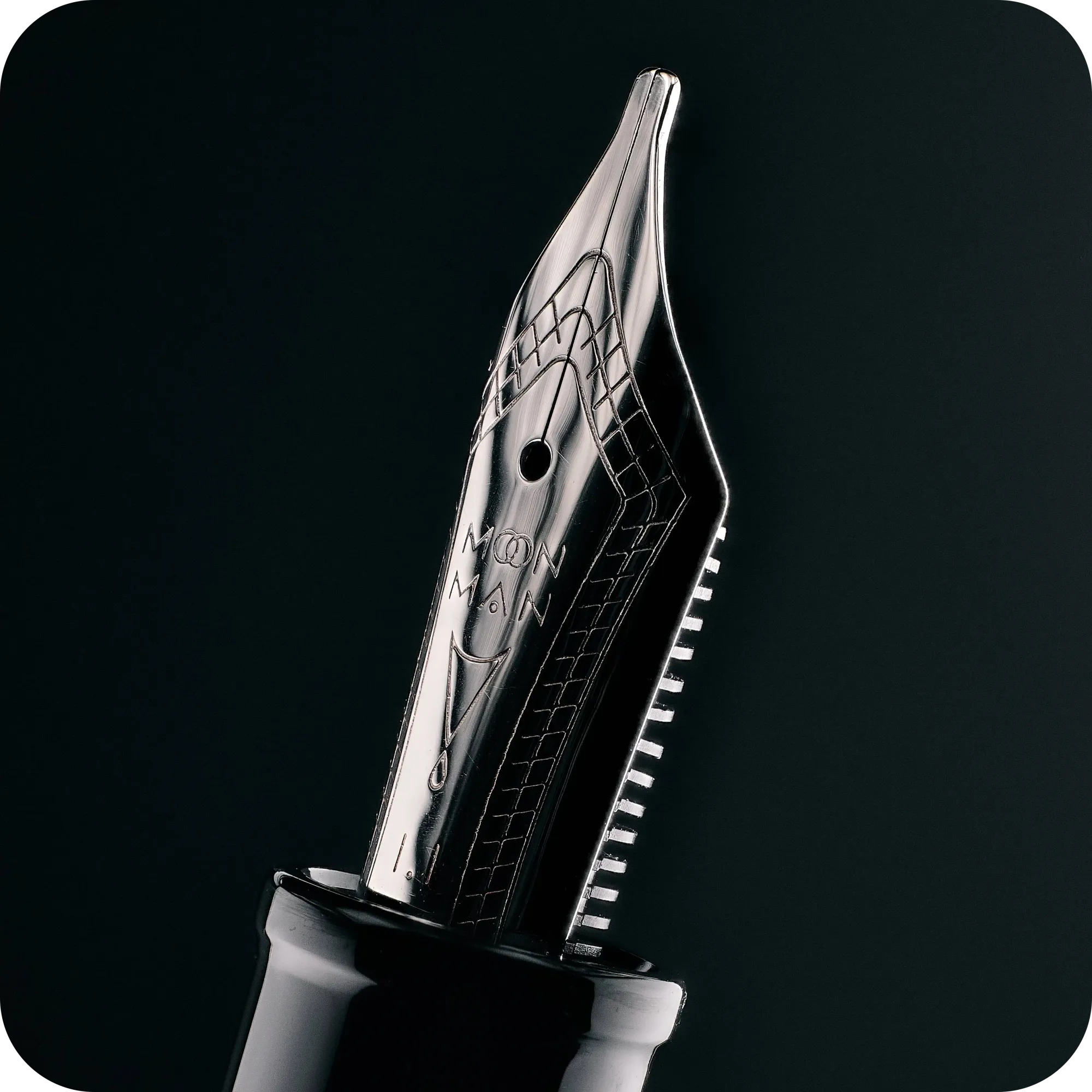
In staying true to the design of the original they've included threads below the blind cap for securely posting the cap. Now, there's a very good reason why the Lorenzo de Medici model doesn't have these rear threads. When you cover a pen with metal, it—surprisingly enough—adds a considerable amount of weight to it. In this case, it makes for the heaviest pen in the series at 47.2g inked, with a whopping 23.4 of those grams located solely in the cap. You're basically adding the full weight of the body onto the back of the pen when you post it. I imagine the version that more closely follows the Proust design fares better in that regard since its cap is just resin, but for this version—and really all of these pens—you're better off leaving it un-posted.
P139
- Nib Size: #6 & #8
- Length: 136.2mm capped / 126.2mm uncapped / 167mm posted
- Width: 15.7mm body / 13.1-12.2mm section
- Weight: ~35.6g inked / 34.9g empty
- Price: ~£38 (#8) / ~£31 (#6)
- Originality Rank: Clone (Orange) / Homage (White + Black Rock)
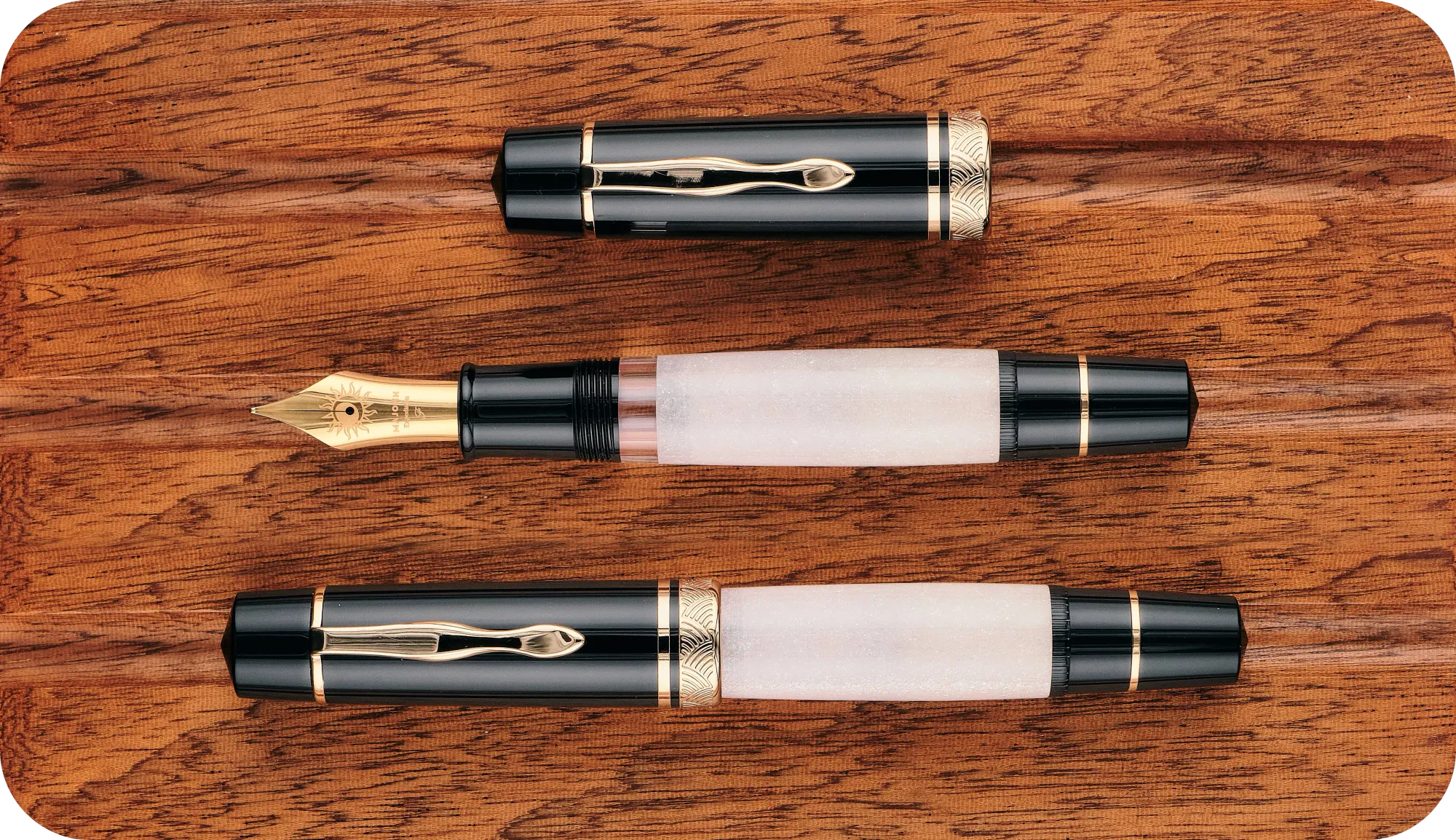
It took a while for Majohn to come out with their own #8 nib—with Jinhao, Wing Sung, & Hongdian way ahead of them—but they eventually came out swinging with the P139. This one is based on the Montblanc Hemingway which was the first of Montblanc's Writer's Edition series of pens, which in turn was based on the Meisterstück 139 from the 1940's and is where we get the P139 name from. The version I have uses a sparkly white resin for the body, but they also have an orange-bodied version which more closely resembles the Hemingway, and a new "Black Rock" resin version. Unusually, they released this pen with both #8 and #6 nib options—perhaps as a nod to the smaller-nibbed 102 S from the 1930's which was the first time they used this clip design—as well as now having the option for the new Bock stainless steel #8.

This very quickly became my favourite Chinese #8, although only slightly ahead of my much-loved Wing Sung 630—itself a clone of the Meisterstück 149—more on that later. It's a little shorter than the 149-style body, but keeps the girth, making it very comfortable to use with the large nib. The sparkly white resin body looks great, with some lovely depth to it when the light hits just right. Interestingly, there is a Moonman engraving on the back of the cap, which is surprising for such a recent pen. But the star of the show is the nib and feed. Taking a leaf out of Hongdian's book, they opted for an ebonite feed which provides better flow than standard ABS feeds. Combine it with a large, bouncy nib and you've got a fantastic writing experience with a touch of line variation.
P140
- Nib Size: #8
- Length: 149.3mm capped / 132.6mm uncapped / 170.4mm posted
- Width: 15.4mm body / 13.1-12.2mm section
- Weight: ~38.4g inked / 37.2g empty
- Price: ~£35
- Originality Rank: Homage
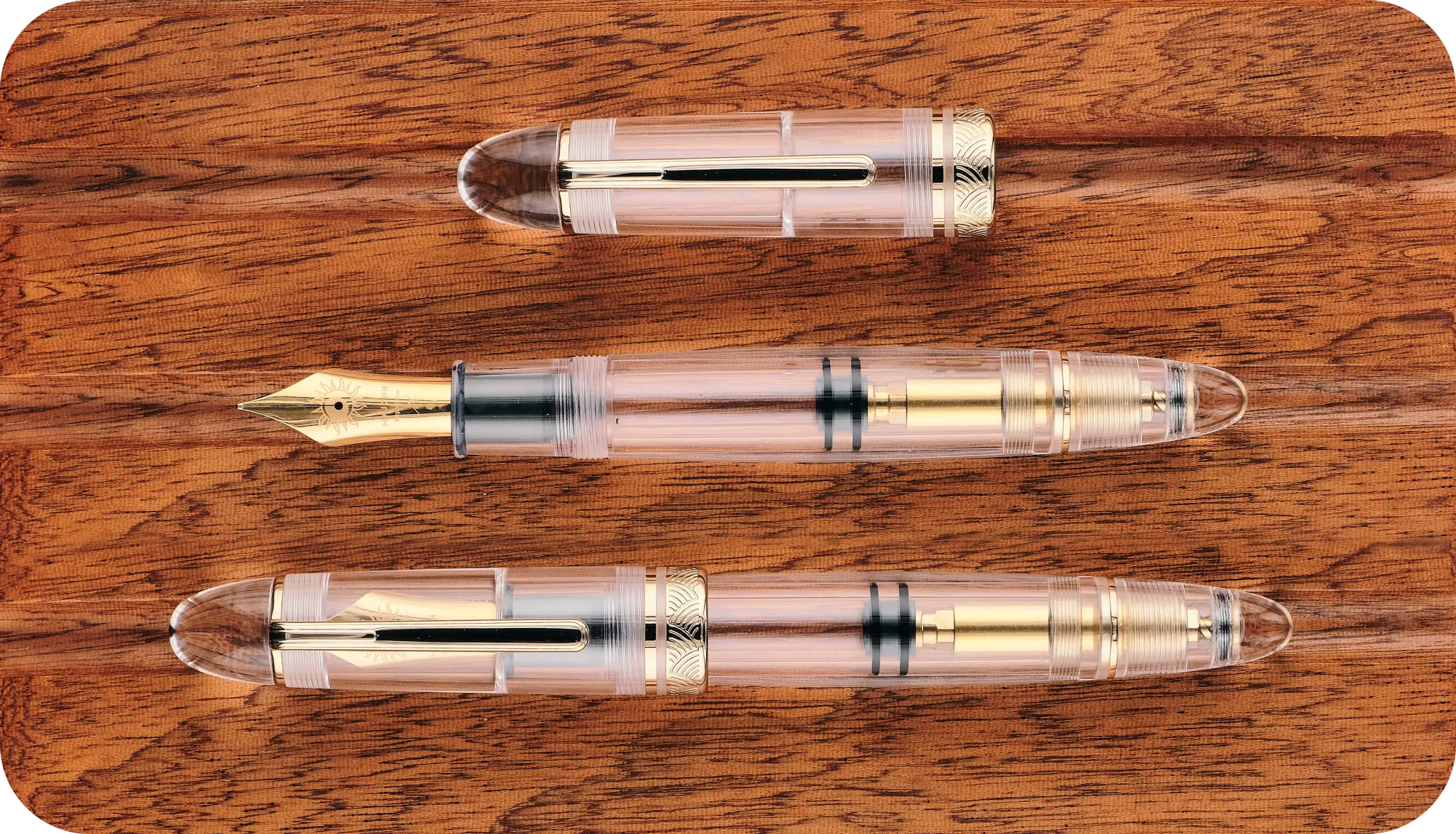
Our final penultimate pen is the P140, which I believe is their version of the exceptionally rare Meisterstück 149 Demonstrator (although it's now also available in solid green, blue, & purple). I didn't even know the 149 Demo existed before I started researching for this post. There were a couple versions of it with either black finials on the body & cap, a white finial on just the cap, or completely clear.4 The P140 is based on the latter version & is (marginally) the largest of all the P Series pens. It makes use of the same #8 Majohn and Bock nibs with ebonite feeds from the P139, but I stuck with the Majohn nib as the gold plating on them better matches the pens trim, plus I find the Bock nib to be a tad stiffer.
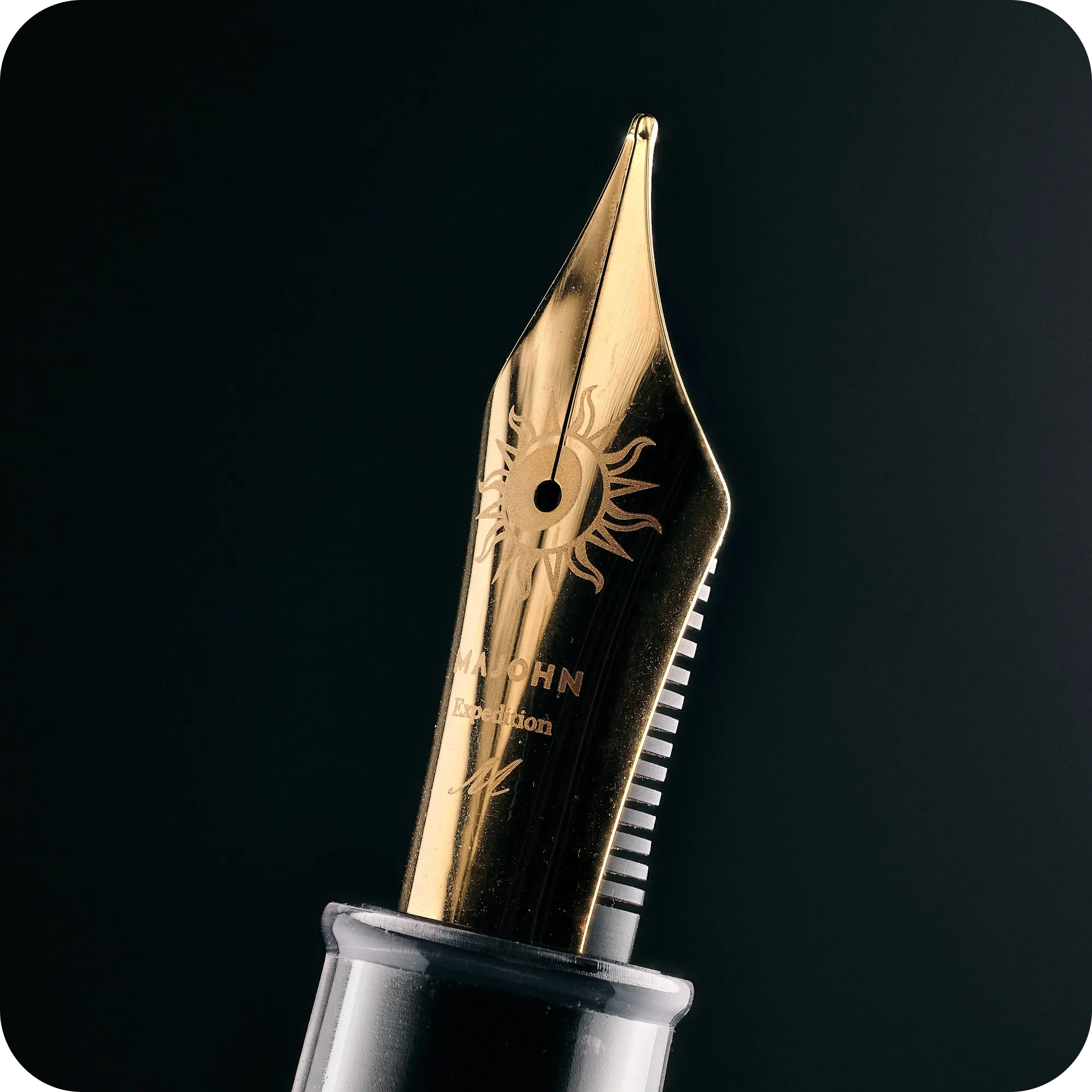
I initially didn't realise this was based on anything, as it just looked like a piston version of one of their original clear acrylic eyedropper pens, but once it arrived it was clearly the 149 design (pun not intended). The fan design on the cap band carries over from the P139, as do the aforementioned nib and feed, and the section has the same dimensions. There are slight differences in the threading, so the P139 cap will fit comfortably on the P140, but not vice versa. I really like this fan (or wave?) design on the cap band. As far as I can tell, it's wholly original and is one of the little details that helps to immediately tell you it's not a Montblanc. The writing experience is essentially identical to the P139, and although the caps are much lighter on these two than on other models, they still add more weight to the back than I find comfortable, so I still recommend leaving them un-posted.
P141
- Nib Size: #8
- Length: 147.9mm capped / 131.8mm uncapped / 167.5mm posted
- Width: 15.4mm body / 13.5-12.7mm section
- Weight: ~33.9g inked / 33.0g empty
- Price: ~£25-£35
- Originality Rank: Clone

Just as I was getting ready to publish this post, the P141 comes along. There's no getting around it—it's a Meisterstück 149 clone, through and through. The weight, dimensions, and styling are as near as damn it, but there are 2 ways you can instantly tell that it's not a Montblanc: the cap finial and the cap bands. Instead of having a thin band above and bellow the main cap band, it only has one above it, and instead of the snowflake/snowcap logo inlaid in white on the cap finial it has a plated tip matching the trim colour. The P141 is available in 4 colours (black, dark blue, dark green, and red), each with gold or silver trim options. I opted for the red model with silver trim as I think it's the sharpest looking version. Instead of using their "Expedition" #8 nib and ebonite feed used on both the P139 and P140 (although some sellers are now offering it with the Expedition nib units if you prefer them), they've gone back in line with the usual dual-tone Moonman design—itself based on Montblanc's Meisterstück nibs. At time of writing there is no option to buy them with the plain silver Bock #8 nib.
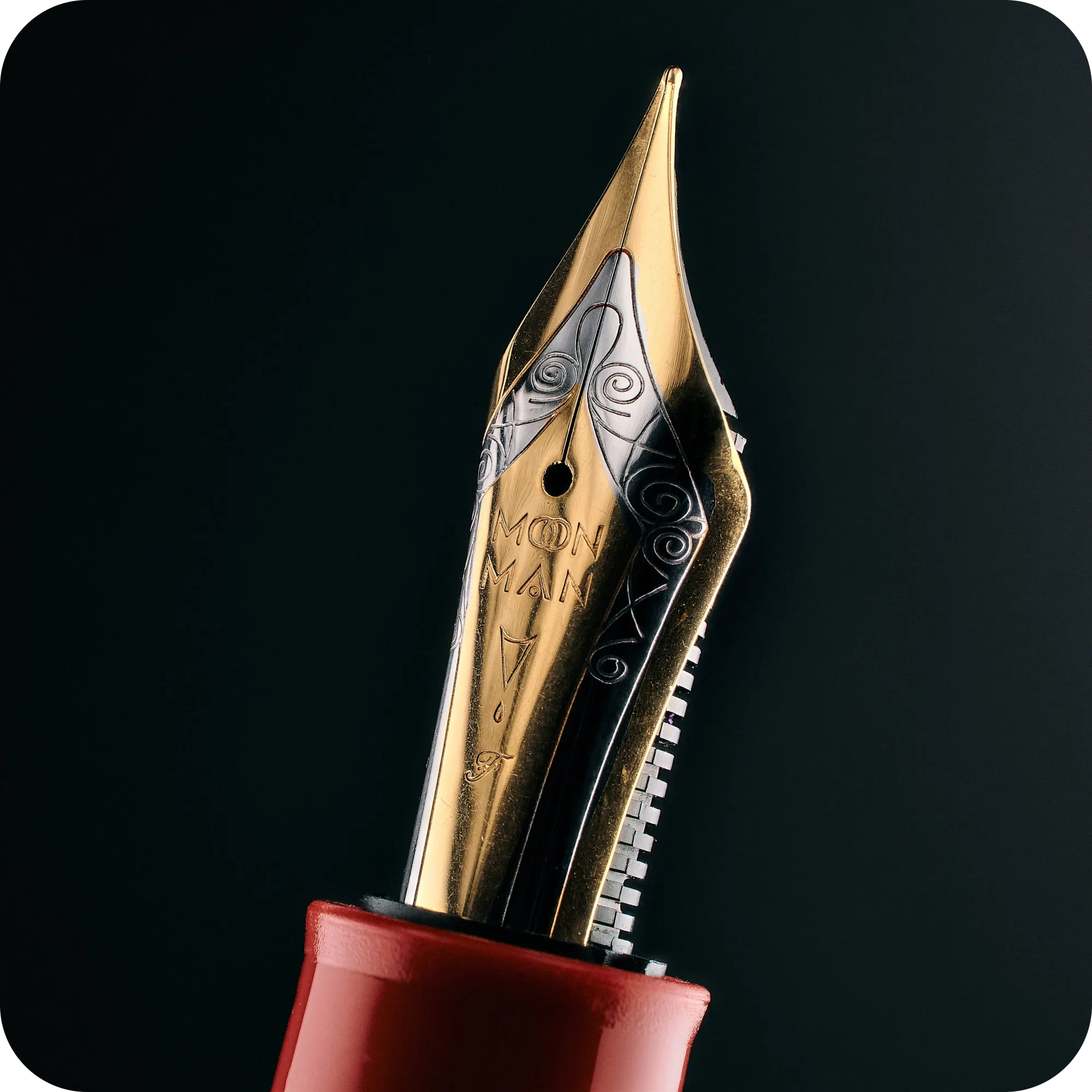
If I'm being honest, I'm not sure why this pen exists considering solid-colour versions of the P140 were released at the same time, giving a modern twist to the 149-style. Do we really need yet another carbon copy of that pen? My first thought is as a Wing Sung 630 competitor, but it seems like a strange time to do this when A) the 630 has been around for a long time now and is both well established and well regarded, and B) there's been so much attention on the #9-nibbed 930, which in turn has given fresh legs to the older 6XX models. Or, it could simply be that they just want in on that style of pen. So the question is, how does the P141 measure up to the P140 and the Wing Sung 630?
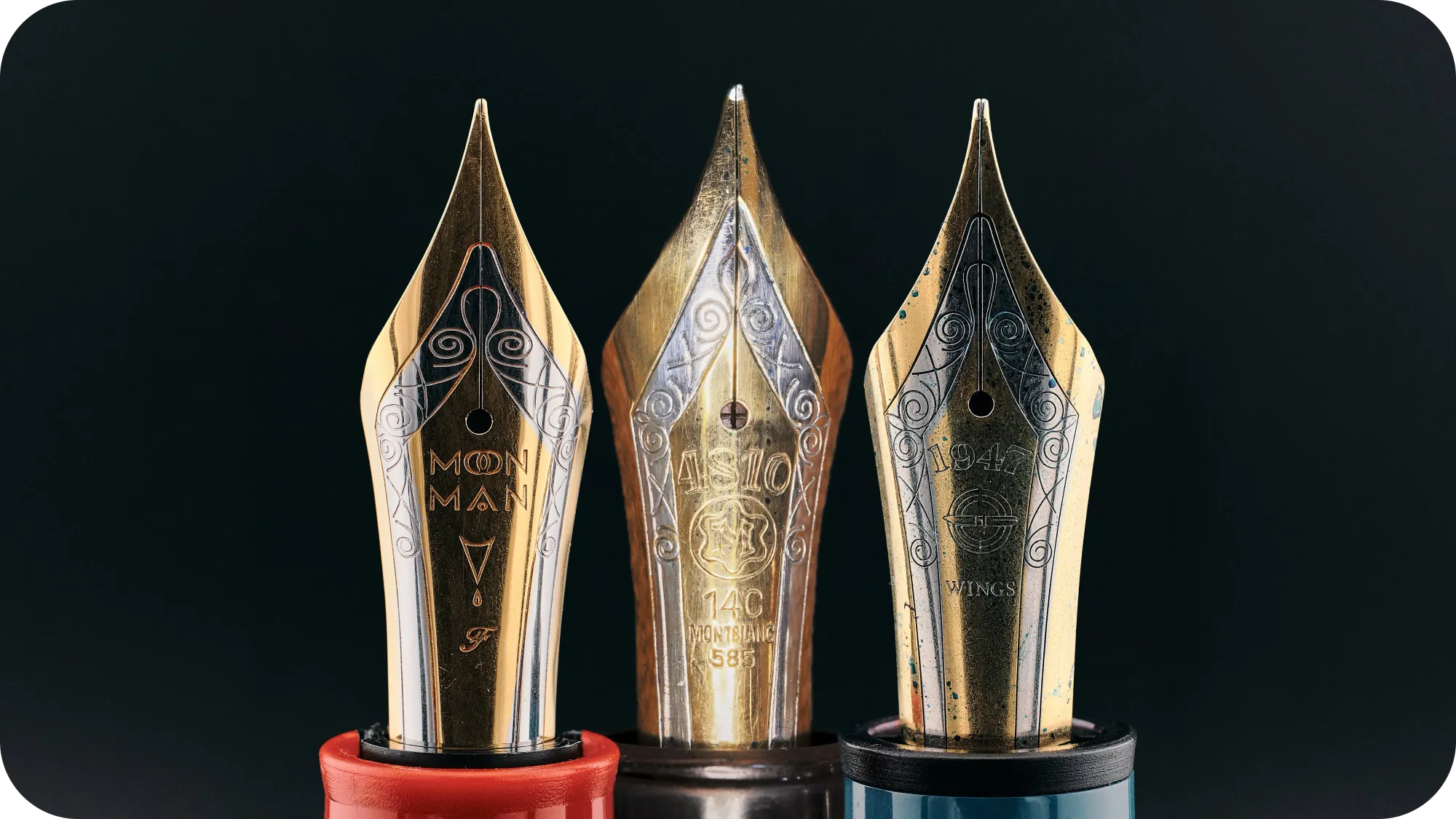
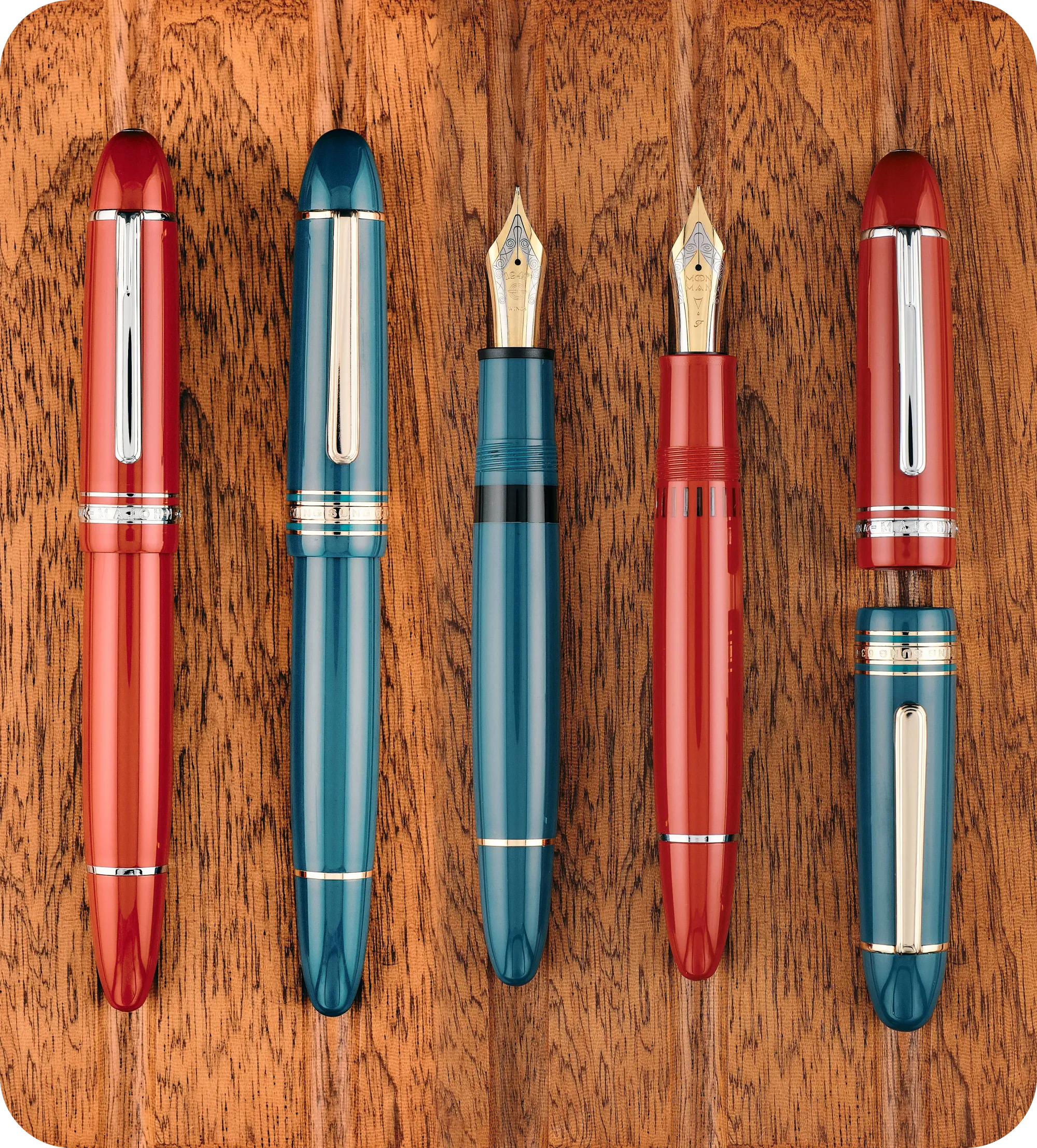
Comparison of the P141 & 630 nibs with a vintage 149 I had a few years back | The P141 side by side with the 630
Spoilers—it doesn't. Don't get me wrong, it's a fine pen. It does everything it's supposed to and it's comfortable to use. I especially like the rounded cap band which you rarely—if ever—see on 149 clones. The 630 is the closest point of comparison. The overall dimensions are very similar, but the proportions differ slightly, so it's not just a rebadge of the 630. The nib imprint is far better on the P141 than the 630, something that's been a long-term issue with the large Wing Sung / Jun Lai nibs. Both of them use a plastic feed, but the 630 is a wetter writer than the P141 and has a slightly softer nib. I feel the P141 would have benefitted greatly from the ebonite feed found in the P139 and P140, so it was disappointing to see it missing here. The design of the 630 & P141 nibs are extremely similar, with only slight differences on the sizing and angle of the swirls & flourishes around the edge. Both of them are imitating the MB149, with the 630 being ever-so-slightly closer to it. The Moonman nibs have always borrowed elements from Montblanc's design while still making it their own, but this is their first time copying the flourishes almost 1:1.


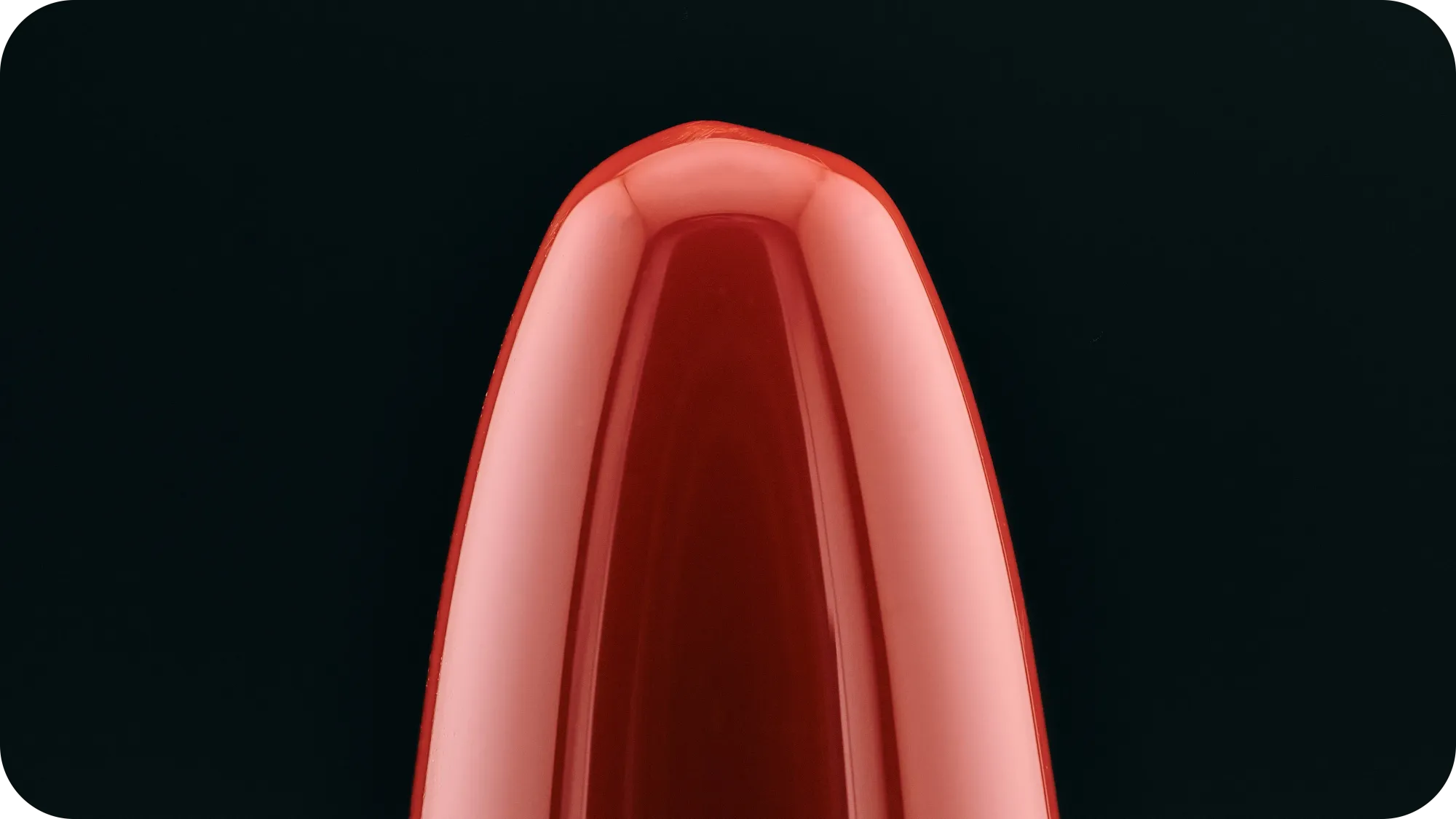

Some details of the P141 | The mis-formed flat end of the piston knob | The fully brass piston of the P140 compared to the plastic in the P141
It doesn't compare all that favourably to the P140 either. Not only is it missing the ebonite feed, but also the fully brass piston mechanism. There is a significant amount of play on the blind cap between when it turns the piston either way of ~150° compared to ~80° on the 630 and only ~15° on both the P140 & P139. Not only does the P141's blind cap have a huge amount of play, but it's not even properly rounded on the finial. It has a large flat surface that is quite difficult to see but is immediately obvious when you feel it. Since it leaves an asymmetrical finish on the finial I don't believe its intentional, and hopefully this was just a random manufacturing defect, but it does speak to the lower quality feeling that this model has. The nib unit on this version is also different than what's used on the P139 & P140, so they're not directly swappable. You can't just swap the ebonite feed into the P141 either as it's too large for the housing. The Expedition nib is also too thick to fit on the plastic feed, so the models that come with those nibs must be keyed differently for those housings. I'm not sure why you'd opt for that nib though, as the whole point of this pen is to look like a 149 🤷
Edit: Again, after writing this Majohn released a hammered titanium version. I still don't recommend this pen, but I love the hammered P136 so much that a larger #8 nibbed version makes me weak at the knees...
Final Thoughts
Now that we've looked at these six sorry, seven pens and their heritage, has my opinion changed at all regarding where they stand on the homage – clone – counterfeit scale? Not really. None of these could be considered counterfeits, although some fly closer to the sun than others. Certain configurations of the P136, P138, P139, and P141 can look almost identical to the real deal, aside from the branding and some nib design. None of them quite stoop to that level, so they land in the clone region for me. The other pens can have similarities to the real thing but either contain unique details, elements from other models, or use materials not seen in their "inspirations", so I'd say that they fall somewhere between homage and clone, perhaps leaning slightly towards the side of homage. I'd include the P137 in that group, especially since it's now also available in anodised blue or with a different style of snake clip which I think actually looks much better than the original, so much so that I'm actively considering selling my original version & re-buying it with the new clip.
My favourite of the group is easily the hammered titanium P136. I love how it looks, I love how it feels in the hand, and I love how wonderfully it writes, especially with the hammered stub nib. It's not the one I would recommend to most people, though. That acclaim goes to the P139 thanks to it's fantastic nib and feed, its comfortable body, and the option to get it with a #6 nib if you're not a fan of the larger #8 nibs. I would advise trying to get the updated version if at all possible. It moves where the ink is drawn into the pen from the back of the feed to the middle, making it much easier to fill from less-full bottles. Look out for "Low Ink Refill function" or "LIR" in the description, or ask the seller about it. I'd highly recommend having an Ink Miser to help with refilling large-nibbed pens, but the LIR versions can negate the need for one. My least favourite is the P135. I like how it looks for the most part, I could even look beyond the somewhat tacky "ruby" cap finial, but the ink flow issue was too frustrating to use. I wish the nib had been the issue, as that's usually very easy to fix, but feeds are a fair bit trickier. The P141 is close behind as I just don't see the point in it and the writing experience is lacking compared to the P139 & P140. I'm sure the P141 wont be the last in this series, so I look forward to seeing what future models may bring to the table.
Have you tried any of these pens, or even the pens they're based on? What are your thoughts regarding clones of expensive or out-of-production pens? Let me know in the comments here or over on Mastodon.
1 Both Moonman and Majohn are English trademarks of 末匠 (Mugjiang/Mòjiàng—roughly translated as "last craftsman"). The Majohn name was created after Kaweco trademarked "Moonman" in Europe back in 2021. They apparently felt that the design of the Moonman T1 too closely resembled the Kaweco Sport, despite Kaweco not having any piston-filling pens (at least, not at that point), them not holding a copyright on the Sport design, and the fact that it—in my & many others opinion—has a closer resemblance to a TWSBI Eco than it does to a Sport. In response, the Majohn trademark was created (along with an actual Sport clone in the titanium RS1 that came with a 14k gold nib for less than half the price of the TITAN Sport Kaweco would eventually release. Hey, if they're going to be accused of doing something, they may as well go ahead and actually do it—and do it really well at that!). Despite this name change, you will often find pens using the Majohn name while sporting Moonman branding on the pen and/or nib. You can find a deeper dive on this subject in this reddit thread from the r/HobbyDrama subreddit.
2 All prices listed are from AliExpress and are "sale" prices instead of RRP, as you will pretty much always find them on sale.
3 The original version from the 1910's, not the quickly discontinued model from 2000 that went on to become the Boheme.
4 Requires an fpgeeks account to view the images, sorry!
